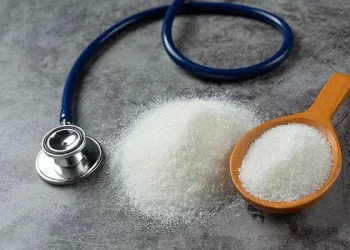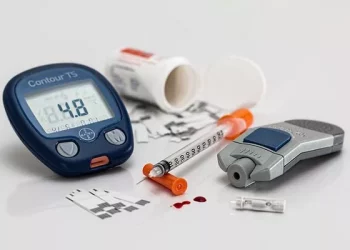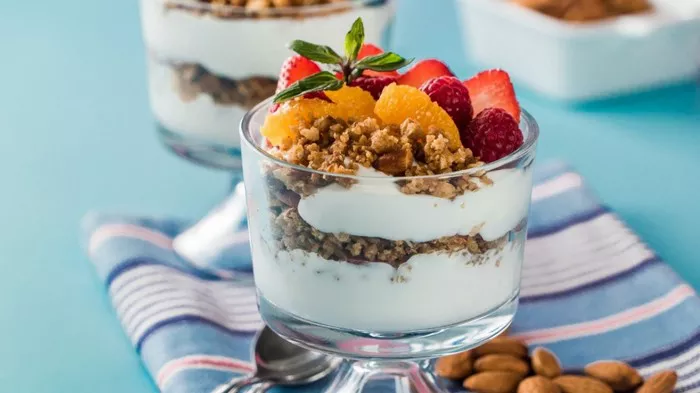Type 2 diabetes is a chronic condition that affects how the body processes blood sugar. It develops when the body becomes resistant to insulin or when the pancreas fails to produce enough insulin. Insulin is a hormone that helps glucose enter the cells to be used as energy. When this process is impaired, sugar builds up in the bloodstream, leading to high blood sugar levels.
Managing type 2 diabetes involves many factors. Among them, a healthy and balanced diet plays a critical role. Choosing the right foods can improve blood sugar control, aid weight management, and reduce the risk of complications. This article explains what a good diet for type 2 diabetes looks like in detail.
The Importance of Diet in Managing Type 2 Diabetes
Food affects blood glucose levels more than most people think. Every bite of food you eat either helps or hurts your blood sugar balance. For people with type 2 diabetes, it’s essential to understand how diet works to regulate glucose levels. A well-structured diabetic diet can keep blood sugar stable throughout the day.
The main goal is to avoid spikes and crashes in glucose levels. This can be achieved by eating meals and snacks that include a balance of carbohydrates, protein, and fat. The timing of meals also matters. Eating at regular intervals helps regulate energy and blood sugar levels.
Key Components of a Good Diet for Type 2 Diabetes
1. Complex Carbohydrates
Not all carbohydrates are bad for people with diabetes. The focus should be on choosing the right type of carbs. Complex carbohydrates break down slowly and do not cause a quick rise in blood sugar. Good examples include:
- Whole grains (brown rice, quinoa, oats)
- Vegetables (especially non-starchy ones like spinach, kale, broccoli)
- Legumes (beans, lentils, chickpeas)
- Fruits (berries, apples, pears — in moderation)
These foods contain fiber, which slows the absorption of sugar and improves blood sugar control. High-fiber diets also promote satiety, which helps in weight loss and long-term blood glucose management.
2. Lean Proteins
Protein has a minimal effect on blood sugar. It also helps with satiety and muscle maintenance. People with type 2 diabetes should include lean protein in every meal. Good sources include:
- Skinless poultry (chicken, turkey)
- Fish (especially fatty fish like salmon, mackerel, and sardines)
- Eggs
- Low-fat dairy (yogurt, milk, cheese)
- Tofu and tempeh
Limiting red meat and processed meats is advised, as they are linked to increased inflammation and cardiovascular risk.
3. Healthy Fats
Fat is not the enemy when it comes to a diabetic diet. Healthy fats improve insulin sensitivity and support heart health. They should be consumed in moderation. The best fats include:
- Avocados
- Nuts and seeds (almonds, walnuts, flaxseeds, chia seeds)
- Olive oil
- Fatty fish
Saturated and trans fats should be limited. These are found in butter, full-fat dairy, fried foods, and many packaged snacks.
4. Non-Starchy Vegetables
These vegetables are low in calories and carbs but high in fiber, vitamins, and minerals. They are excellent for people with type 2 diabetes. Non-starchy vegetables include:
- Leafy greens (spinach, lettuce, collard greens)
- Broccoli and cauliflower
- Brussels sprouts
- Zucchini and squash
- Peppers and tomatoes
These vegetables should fill up half the plate in every meal.
5. Low-Glycemic Index Foods
The glycemic index (GI) measures how quickly a food raises blood sugar levels. Low-GI foods are better for people with diabetes. They cause a slower, more stable rise in blood sugar. Examples of low-GI foods are:
- Barley
- Sweet potatoes
- Lentils
- Most fruits and non-starchy vegetables
Combining low-GI foods with protein and healthy fat can further help keep blood glucose levels stable.
Foods to Limit or Avoid
1. Refined Carbohydrates
These include white bread, white rice, pasta, and sugary cereals. They break down quickly and spike blood sugar. Replacing them with whole grain versions is a better choice.
2. Sugar-Sweetened Beverages
Sodas, fruit juices, and energy drinks contain large amounts of sugar. They lead to rapid spikes in blood glucose and contribute to weight gain. Water, herbal teas, and black coffee are better options.
3. Highly Processed Foods
These often contain hidden sugars, unhealthy fats, and sodium. Examples include chips, pastries, frozen dinners, and fast food. Reading food labels helps identify hidden sugars and carbs.
4. Alcohol
Alcohol can cause unpredictable changes in blood sugar. It also interferes with liver function and medication. If consumed, it should be in moderation and with food.
Meal Planning for Type 2 Diabetes
The Plate Method
This method is simple and effective. Divide your plate into three parts:
- Half with non-starchy vegetables
- One-quarter with lean protein
- One-quarter with whole grains or complex carbs
This visual tool helps ensure balanced meals and portion control.
Carbohydrate Counting
This approach involves tracking the amount of carbs in each meal. It allows better prediction of blood sugar response. Many healthcare providers recommend it for more accurate blood sugar monitoring.
Consistent Meal Timing
Eating meals and snacks at regular intervals helps maintain steady blood glucose levels. Skipping meals can cause low blood sugar, especially if you take insulin or other glucose-lowering medications.
Sample Daily Meal Plan
Breakfast
- Oatmeal topped with chia seeds and berries
- Boiled egg
- Black coffee or unsweetened tea
Snack
- Greek yogurt with walnuts
Lunch
- Grilled chicken breast
- Mixed green salad with olive oil dressing
- Quinoa or brown rice
Snack
- Apple slices with almond butter
Dinner
- Baked salmon
- Steamed broccoli and carrots
- Sweet potato mash
Evening Snack (optional)
- Handful of almonds or string cheese
Hydration and Diabetes
Staying hydrated helps kidneys remove excess glucose through urine. Water is the best option. Limit beverages with caffeine and avoid sweetened drinks. Herbal teas are also a good choice for variety.
Role of Physical Activity
Though not part of the diet, exercise complements dietary efforts. It improves insulin sensitivity and lowers blood sugar. Aim for at least 150 minutes of moderate activity per week. Walking, swimming, or cycling are great options.
Importance of Personalization
Every person with diabetes is different. Age, weight, activity level, and medications all influence dietary needs. It is essential to work with a registered dietitian or healthcare provider to tailor a diet plan. A personalized plan increases adherence and improves outcomes.
Monitoring and Adjusting
It’s important to track blood sugar regularly. This helps identify how foods affect your levels. Keeping a food journal is useful. Adjustments can be made based on trends and feedback from blood sugar readings. Over time, people become more aware of their body’s unique responses to food.
Supplements and Superfoods
Some supplements may aid in managing blood sugar, though they are not replacements for a healthy diet. Cinnamon, chromium, and magnesium have been studied for potential benefits. Consult your doctor before starting any supplement.
Superfoods for diabetes include:
- Blueberries
- Leafy greens
- Chia seeds
- Turmeric
These foods provide antioxidants and anti-inflammatory benefits that support blood sugar control and heart health.
Conclusion
A good diet for type 2 diabetes is not about restriction. It is about making informed choices that support overall health. Focus on whole foods, balanced meals, and consistent eating patterns. By combining a thoughtful diet with blood sugar monitoring and physical activity, people with type 2 diabetes can lead full, active lives. The right diet is not only sustainable but empowering — giving control back to the individual.
Related topics:
What Foods Should a Borderline Diabetic Avoid?

























